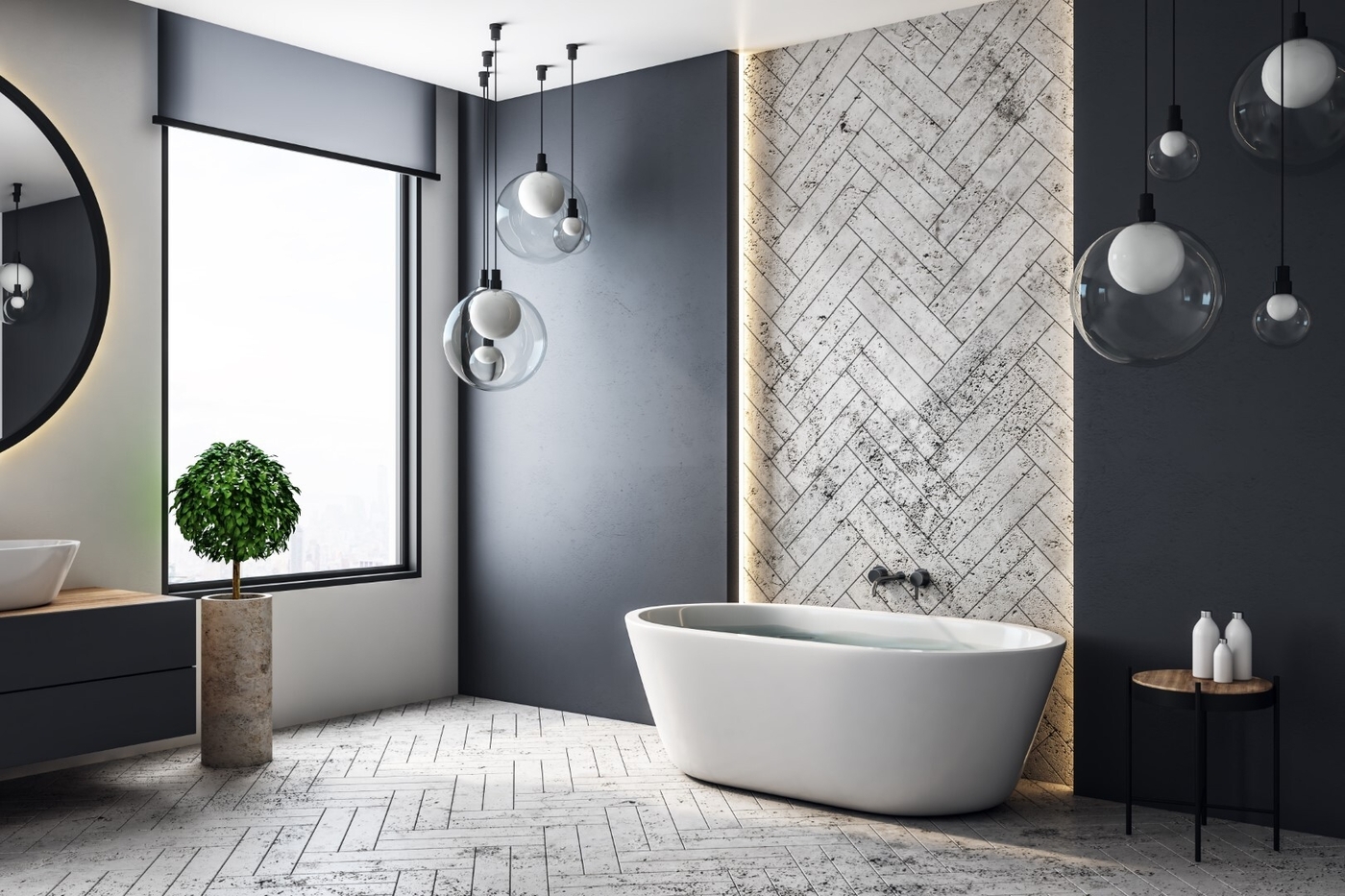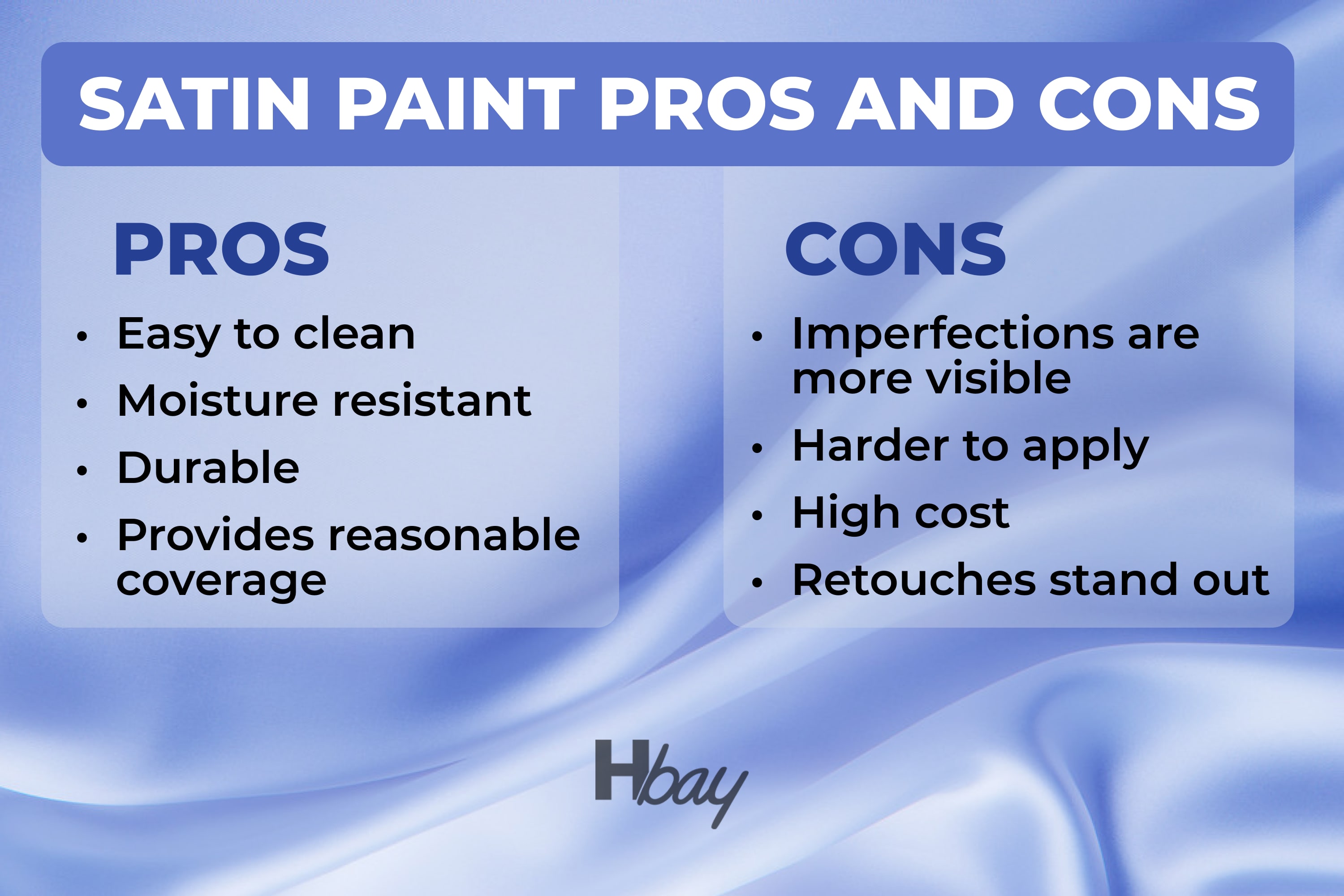Satin Paint Properties and Benefits for Bathrooms: Satin Paint For Bathroom

Satin paint is a popular choice for bathroom walls and ceilings because of its unique properties and benefits. This type of paint boasts a subtle sheen that adds a touch of elegance without being overly glossy.
Satin Paint Sheen Level and Comparison
Satin paint occupies a middle ground in the sheen spectrum, falling between matte and semi-gloss finishes. It possesses a soft, velvety appearance that reflects light gently, creating a warm and inviting ambiance. Its sheen level is typically described as a “low-luster” finish, offering a balance between visual appeal and practicality.
Compared to matte paint, which has no sheen and absorbs light, satin paint offers a more durable and washable surface. Conversely, semi-gloss paint, with its higher sheen, provides a more reflective surface that can accentuate imperfections in the walls. Satin paint strikes a balance between these extremes, providing a sheen that is both visually pleasing and practical for bathroom use.
Benefits of Satin Paint in Bathrooms
Satin paint is a great choice for bathrooms due to its durability, moisture resistance, and ease of cleaning.
* Durability: Satin paint forms a tough, protective layer that can withstand the rigors of bathroom use. Its resilience helps to prevent scratches, scuffs, and other forms of wear and tear.
* Moisture Resistance: Bathrooms are prone to humidity and moisture buildup, which can damage paint over time. Satin paint, with its slightly thicker film, offers excellent resistance to moisture, minimizing the risk of peeling, cracking, or mildew growth.
* Ease of Cleaning: Satin paint’s smooth surface makes it easy to clean. Spills, splashes, and even stubborn stains can be wiped away with a damp cloth without damaging the paint. This makes it a practical choice for busy bathrooms where frequent cleaning is essential.
Comparison of Satin Paint with Other Bathroom Finishes
Satin paint stands out as a versatile option when compared to other finishes commonly used in bathrooms.
| Paint Finish | Sheen Level | Pros | Cons |
|---|---|---|---|
| Matte | No Sheen | Conceals imperfections, creates a soft, understated look | Less durable, more prone to stains, difficult to clean |
| Eggshell | Low Sheen | Offers a subtle sheen, more durable than matte, easier to clean | May show imperfections, less moisture resistant than satin |
| Semi-Gloss | High Sheen | Very durable, highly moisture resistant, easy to clean | May accentuate imperfections, can create a sterile or cold feel |
| Satin | Low-Luster | Durable, moisture resistant, easy to clean, visually appealing | May show minor imperfections, less reflective than semi-gloss |
Specific Situations Where Satin Paint is Suitable
Satin paint is particularly well-suited for a range of bathroom applications.
* High-Traffic Areas: Satin paint’s durability and ease of cleaning make it ideal for areas that experience frequent use, such as shower walls, vanity areas, and toilet rooms.
* Damp Environments: Its moisture resistance makes satin paint a reliable choice for bathrooms with high humidity levels, ensuring that the paint remains intact and mildew-free.
* Accent Walls: The subtle sheen of satin paint can create a striking visual effect, making it an excellent option for accent walls in bathrooms.
* Ceilings: Satin paint’s low-luster finish provides a soft, diffused light reflection, making it a good choice for bathroom ceilings.
Choosing the Right Satin Paint for Your Bathroom

Picking the perfect satin paint for your bathroom is like choosing the right outfit for a fancy dinner party – you want something that looks good, feels good, and can handle a little mess. But unlike a dress, your bathroom paint needs to withstand the daily drama of steam, splashes, and the occasional toothbrush mishap.
Understanding Bathroom Paint Considerations
Choosing the right satin paint for your bathroom involves considering several factors. These factors will help you make an informed decision that ensures both aesthetic appeal and long-lasting performance.
- Color: The color of your bathroom paint can significantly impact the overall ambiance and size perception of the space. Lighter colors can make a small bathroom feel larger and brighter, while darker colors can create a more intimate and sophisticated atmosphere. Consider the natural light in your bathroom and the desired mood you want to achieve.
- Brand: Different paint brands offer varying qualities and features in their satin paint options. Some brands are known for their superior mildew resistance, while others prioritize durability and ease of application. Researching and comparing different brands will help you find a paint that meets your specific needs and budget.
- Features: When choosing satin paint for your bathroom, look for specific features that address the unique challenges of this space. Mildew resistance is crucial for preventing unsightly mold growth, while moisture barrier properties help protect your walls from water damage.
The Importance of Bathroom-Specific Paint, Satin paint for bathroom
Bathroom paint isn’t just about color; it’s about protecting your walls from the constant onslaught of moisture. Imagine your bathroom walls as the brave soldiers defending your home from a relentless enemy – water. Just like a well-trained army, bathroom paint needs to be equipped with the right tools to withstand the battle.
- Mildew Resistance: Mildew is a common enemy in bathrooms, thriving in warm, humid environments. Choosing a paint formulated with mildewcide additives will help prevent the growth of this unsightly and potentially harmful fungus. It’s like giving your bathroom walls a shield against the invading forces of mildew.
- Moisture Barrier: A moisture barrier is another essential feature of bathroom paint. It acts like a waterproof suit, protecting your walls from the constant exposure to steam and splashes. This barrier prevents water from seeping into the walls, causing damage and creating a breeding ground for mold.
Exploring Different Paint Brands and Options
The paint aisle can feel like a jungle sometimes, with so many brands and options to choose from. But fear not! Understanding the strengths and weaknesses of different brands can help you navigate this jungle with confidence.
- Sherwin-Williams: Sherwin-Williams is a well-known brand known for its high-quality paints, including their satin options. Their Emerald line offers excellent mildew resistance and durability, making it a popular choice for bathrooms.
- Benjamin Moore: Benjamin Moore is another top contender in the paint world, offering a wide range of satin paint options. Their Aura line is known for its exceptional coverage and durability, while their Regal Select line provides a good balance of quality and affordability.
- Valspar: Valspar is a more budget-friendly option that still offers decent quality. Their Reserve line features a satin finish with good mildew resistance and moisture barrier properties.
Choosing the Right Color for Your Bathroom
The color you choose for your bathroom can dramatically impact the overall feel and functionality of the space. Choosing the right color is like selecting the perfect soundtrack for your bathroom – it sets the mood and complements the overall experience.
- Size: Lighter colors, such as white, cream, and light blues, can make a small bathroom feel larger and brighter. These colors reflect light, creating an illusion of more space.
- Lighting: Consider the natural light in your bathroom. If it’s a dimly lit space, opt for lighter colors that will brighten the room. If you have plenty of natural light, you can experiment with bolder colors.
- Desired Ambiance: What kind of mood do you want to create in your bathroom? Cool colors like blues and greens can create a calming and spa-like atmosphere. Warm colors like yellows and oranges can create a more energetic and invigorating vibe.
